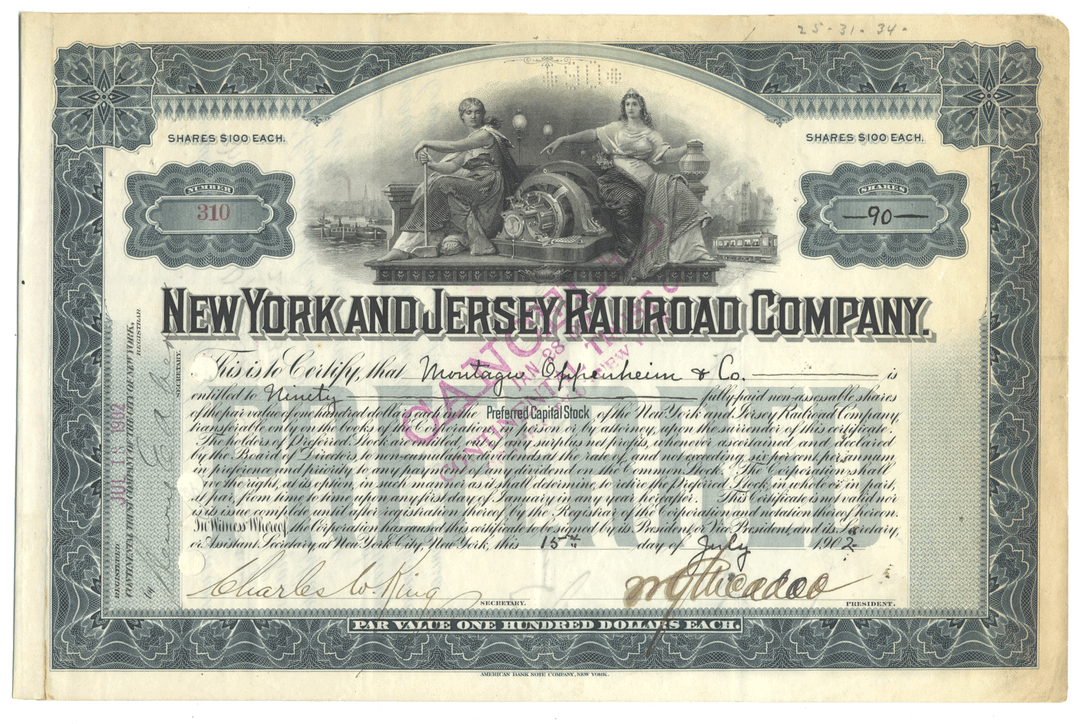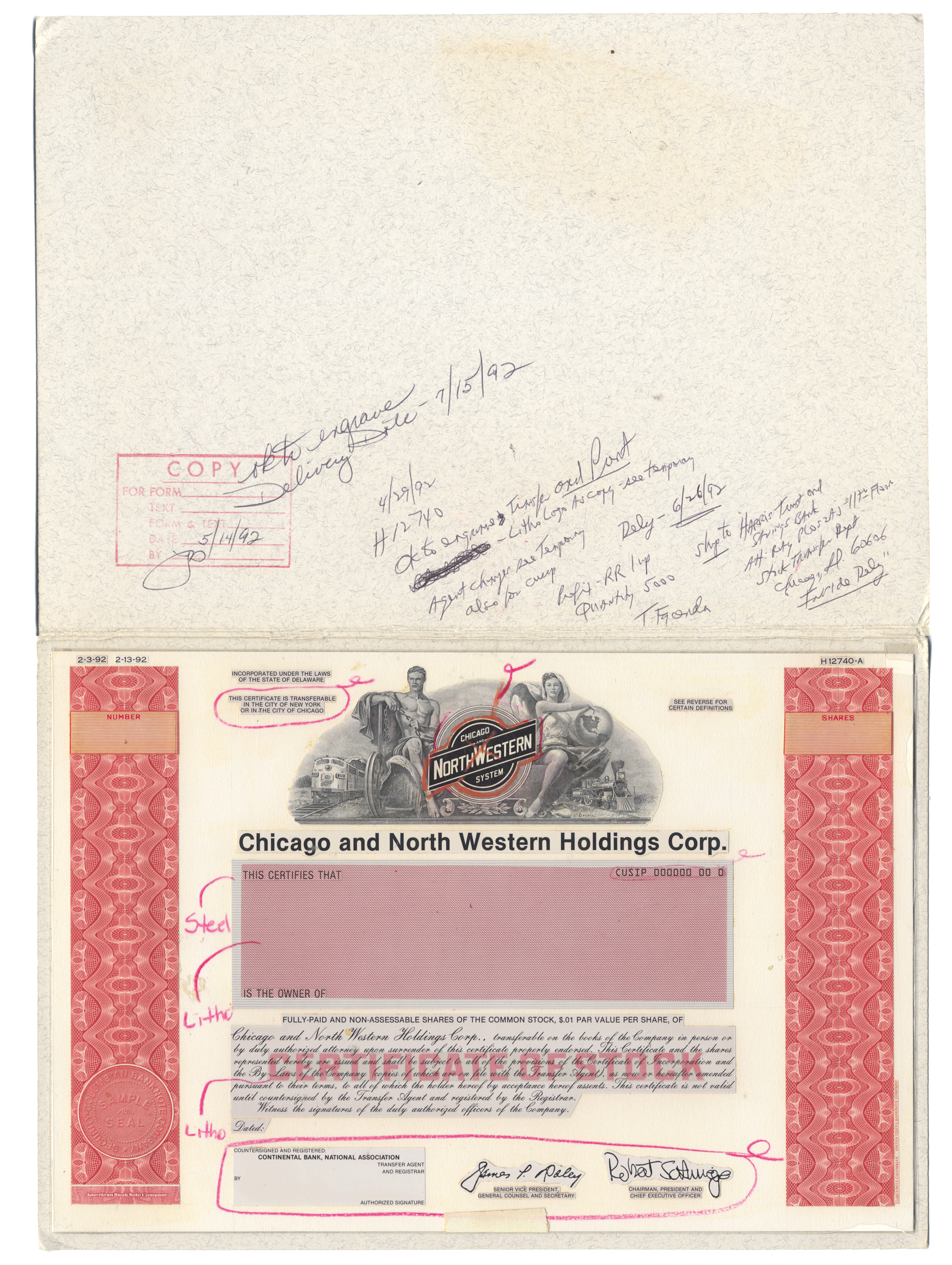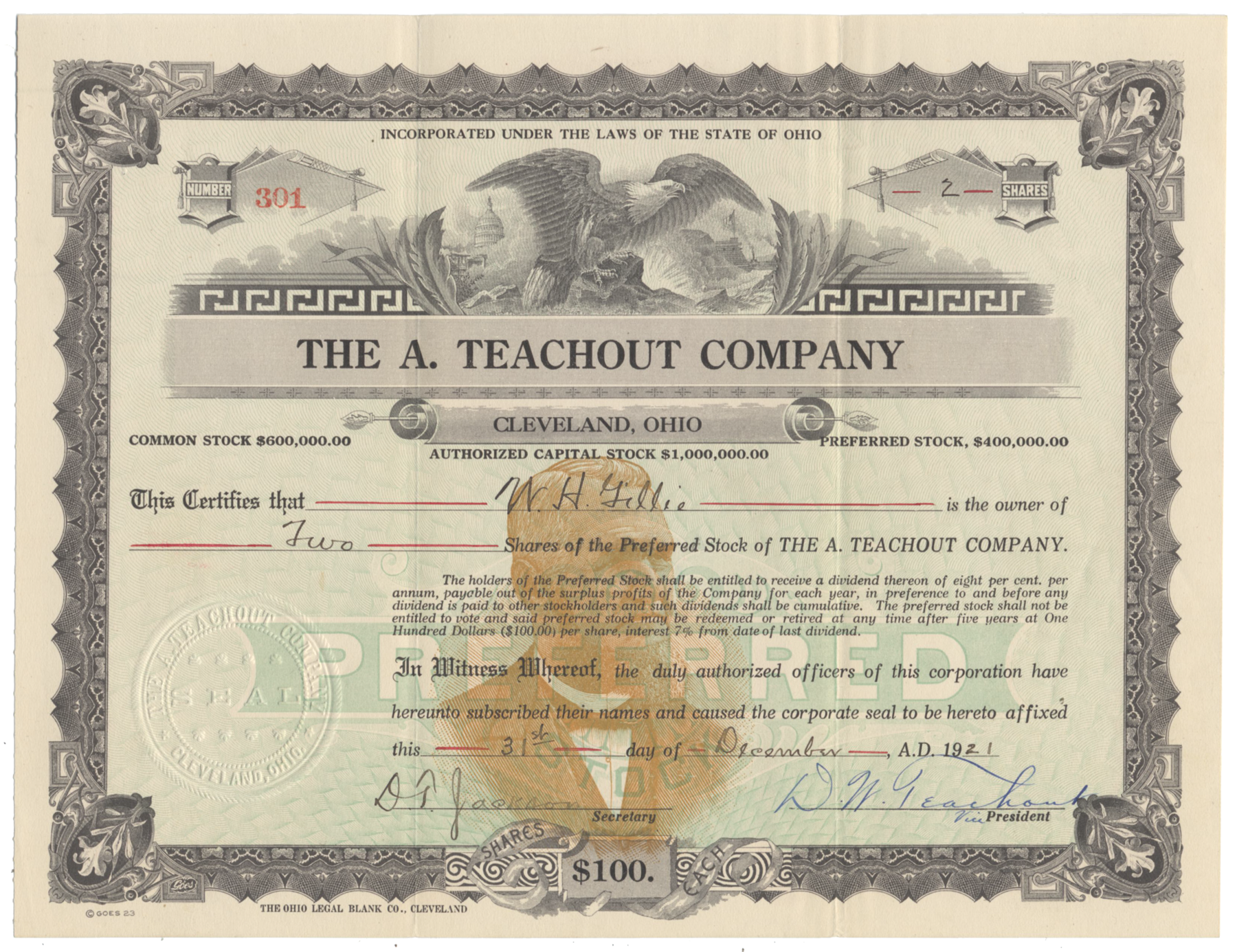
New York and Jersey Railroad Company (Signed by William Gibbs McAdoo)
- Guaranteed authentic document
- Orders over $50 ship FREE to U. S. addresses
Product Details



New York and Jersey Railroad Company
Certificate Type
Common Stock
Date Issued
July 15, 1902
Canceled
Yes
Printer
American Bank Note Company
Signatures
Hand signed
Approximate Size
10 3/4" (w) by 7" (h)
Additional Details
Signed by William Gibbs McAdoo
Historical Context
In 1874, the Hudson Tunnel Railway Company was formed to construct tunnels between Jersey City and Greenwich Village, but stopped construction well before completion. The assets (land, partially-constructed tunnels, trackage, etc.) were eventually sold to the newly-organized New York & Jersey Railroad (incorporated on February 12, 1902), under the leadership of William G. McAdoo. The New York & Jersey tunnels were expected to have connections to the Delaware, Lackawanna & Western and Erie terminals in Jersey City.
Many newspaper articles at the time note that there were rampant rumors that the Erie and DL&W actually controlled the NY&J tunnels, and intended to run their heavy-rail passenger trains through them. This was, of course, at the same time the Pennsylvania Railroad was fighting for rights to drive its tunnels into Manhattan. McAdoo, and the presidents of the DL&W and Erie (both of which were heavily influenced by JP Morgan), vigorously denied these rumors, but the articles claim that the press and public almost universally believed them to be true.
Then, on March 21, 1903, the Hudson & Manhattan Railroad Company was incorporated. McAdoo admitted a connection to the H&M, and stressed its importance in the ultimate tunnel system, but refused to comment beyond that. It was soon revealed that the H&M intended to construct a line from Broadway & Cortlandt Street in New York City to Exchange Place in Jersey City. In an article on March 24, 1903, it was reported that this new H&M tunnel might be connected to the NY&J tunnel, as well as the Erie (Jersey City), DL&W (Hoboken), Central New Jersey (Jersey City), and West Shore Railroad (Weehawken) terminals.
An April 26, 1903 article contained further denials of any intention to run heavy rail from Morgan’s railroads through the NY&J tunnels, which was backed up with a discussion of the vastly different engineering of the NY&J tunnels and the PRR tunnels then being constructed further north. While the PRR tunnels were built on solid rock foundations, the NY&J tunnels were not, a distinction with McAdoo seemed to hope would settle the rumors.
A June 10, 1904 article identifies the other unusual feature - the extension to Astor Place under 9th Street, to connect with the IRT. At the time, the NY&J was having difficulty obtaining permits from the City for construction of its line under 6th Avenue. The City worried this would preclude later construction of a subway. The connection to Astor Place was viewed as a contingency plan (or, perhaps, consolation prize) should the NY&J be denied the right to tunnel under 6th Avenue. But, in January, 1905, the City granted the right to build under 6th Avenue.
Concurrent with this announcement, an organization knows as the Hudson Companies was incorporated, for the purpose of constructing the H&M tubes between Exchange Place and Downtown, and extending the NY&J tunnels into Midtown. It was at this point that the NY&J and H&M officially came under common control, although the Hudson Companies itself was intended to expire upon completion of construction. The directors of the new Hudson Companies were friends and associates of McAdoo. On the same day that the Hudson Companies came to be, it announced an arrangement with the PRR under which it would be granted access to the Exchange Place terminal for 500 years, in exchange for allowing the PRR to use the H&M’s Cortlandt Street station as a passenger and baggage room for PRR passengers. This article also mentioned connection of the tunnels to the CNJ, DL&W, and Erie terminals.
By now, it was expected that the PRR would end up taking control of the Hudson Companies, despite the rumors just a few years earlier that Morgan’s railroads would dominate the tubes. Indeed, a PRR official refused a position on the Hudson Companies board, because he expected that his company would soon be negotiating to purchase the Hudson Companies, and a position on their board would create a conflict of interest.
On December 5, 1906, the New York & Jersey Railroad, Hoboken & Manhattan Railroad, and Hudson & Manhattan Railroad merged to form the new Hudson & Manhattan Railroad, bringing entire Hudson Tubes system under a single company. $100 million in bonds were floated to complete system.
William Gibbs McAdoo

The son of a southern jurist, William Gibbs McAdoo was born near Marietta, Georgia, and educated at the University of Tennessee. After practicing law in Chattanooga, Tennessee, for several years, he opened a law office in New York City in 1892. Ten years later he organized and directed the company that completed construction of the railroad tubes under the Hudson River. After service as vice-chairman of the Democratic National Committee in 1912, McAdoo became President Woodrow Wilson's secretary of the Treasury. In addition to his duties as secretary, he served as chairman of the Federal Reserve Board, the Federal Farm Loan Board, the War Finance Corporation, and the United States section of the International High Commission. He also floated four Liberty Loans and was responsible for extending credit to the Allied Powers in World War I. In January 1918, with the railroads on the verge of collapse, he became director general of railways and instituted operational reforms. A widower, he married the President's daughter, Eleanor Randolph Wilson. (They were divorced 20 years later.)
McAdoo's superior abilities won him a strong following within the administration. If President Wilson had withdrawn himself categorically from contention for a third nomination in 1920, McAdoo would undoubtedly have been selected, although he could not, as the President's son-in-law, make an open bid. McAdoo would probably have won the nomination in 1924, also, but he was linked indirectly to the Teapot Dome scandal (though not involved in the scandal itself) and had committed certain professional improprieties. As it was, he and Al Smith deadlocked the Democratic nominating convention for dozens of ballots, and only after both men reluctantly withdrew was John W. Davis named on the 103rd ballot.
A jaunty man of great personal charm, McAdoo also had a strong strain of opportunism. As Walter Lippmann wrote in 1920, he was not "fundamentally moved by the simple moralities" and his "honest" liberalism catered largely to popular feeling.
Embittered by his failure to win the nomination, McAdoo practiced law in California until he was elected to the U.S. Senate in 1932. He was a staunch supporter, but not truly a leader, of the New Deal. He was defeated for re-nomination in 1938 and died three years later.
McAdoo is known for a famous quote that still rings true today:
”It is impossible to defeat an ignorant man in argument.”
Related Collections
Additional Information
Certificates carry no value on any of today's financial indexes and no transfer of ownership is implied. All items offered are collectible in nature only. So, you can frame them, but you can't cash them in!
All of our pieces are original - we do not sell reproductions. If you ever find out that one of our pieces is not authentic, you may return it for a full refund of the purchase price and any associated shipping charges.





